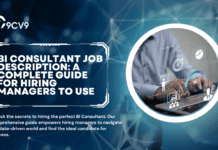Key Takeaways
- Manpower regulations ensure fair labor practices, compliance, and protection for both employers and employees across industries.
- Understanding and adhering to manpower laws helps businesses avoid penalties while improving employee satisfaction and productivity.
- The future of manpower regulation is driven by technology, automation, and evolving workplace standards focused on transparency and inclusivity.
In today’s fast-evolving global employment landscape, manpower regulations play a crucial role in defining how organizations manage, recruit, and sustain their workforce. These regulations encompass a set of laws, policies, and administrative guidelines that govern the relationship between employers and employees, ensuring that both parties adhere to fair labor practices and legal compliance standards. From recruitment processes to employee rights, wages, working conditions, and even foreign labor management, manpower regulations serve as the foundation for ethical and sustainable human resource management across industries.

Understanding manpower regulations is essential for any business, whether it operates locally or internationally. These regulations not only protect the welfare of employees but also safeguard organizations from potential legal disputes and compliance risks. In many countries, manpower laws outline detailed frameworks on employment contracts, minimum wage requirements, occupational safety, social security contributions, and termination procedures. Failure to comply with these standards can result in significant financial penalties, reputational damage, and operational disruptions. As such, businesses are increasingly prioritizing compliance as a key aspect of their strategic human capital management.
The significance of manpower regulations extends beyond legal compliance; they also shape the structure and culture of the modern workforce. In economies where labor laws are well-enforced, organizations are encouraged to foster fair treatment, inclusivity, and transparent HR practices. Meanwhile, in emerging markets, manpower regulations are evolving to address new challenges such as remote work, gig employment, and digital workforce management. Governments and regulatory agencies are continuously updating policies to reflect these changes, ensuring that manpower governance remains aligned with technological advancements and global labor mobility trends.
For HR professionals and business leaders, understanding how manpower regulations work offers a strategic advantage. These regulations determine how companies can hire, manage, and retain talent while maintaining compliance with national labor codes. They also influence foreign labor permit processes, outsourcing models, and workforce planning strategies. For instance, countries like Singapore, Vietnam, and Indonesia have specific manpower acts and ministries dedicated to labor regulation and foreign employment control, providing frameworks that businesses must navigate when expanding their operations regionally or globally.
In the era of HR technology and digital transformation, compliance with manpower regulations has become increasingly automated. HR software platforms and compliance management tools now enable organizations to track employee data, monitor working hours, and ensure adherence to local labor standards seamlessly. This integration of technology and regulation marks a significant shift in how companies approach manpower governance — moving from reactive compliance to proactive workforce management.
Ultimately, manpower regulations represent the backbone of equitable and sustainable employment systems. They balance the interests of employers and employees while promoting economic stability and workforce productivity. For organizations, especially those operating in multiple jurisdictions, having a clear understanding of manpower regulations is not merely a legal obligation — it is a strategic necessity for long-term growth, workforce efficiency, and corporate reputation. This article delves deeper into what manpower regulations entail, their key components, how they are enforced, and why understanding their mechanisms is vital for any organization aiming to build a compliant and resilient workforce structure.
Before we venture further into this article, we would like to share who we are and what we do.
About 9cv9
9cv9 is a business tech startup based in Singapore and Asia, with a strong presence all over the world.
With over nine years of startup and business experience, and being highly involved in connecting with thousands of companies and startups, the 9cv9 team has listed some important learning points in this overview of What are Manpower Regulations and How Do They Work.
If your company needs recruitment and headhunting services to hire top-quality employees, you can use 9cv9 headhunting and recruitment services to hire top talents and candidates. Find out more here, or send over an email to [email protected].
Or just post 1 free job posting here at 9cv9 Hiring Portal in under 10 minutes.
What are Manpower Regulations and How Do They Work
- What exactly do we mean by “manpower regulations”?
- Why manpower regulations matter for business and HR
- Key components of manpower regulations
- How manpower regulations are implemented and enforced
- Key challenges employers face with manpower regulations
- Best practices for organisations (especially HR tech and staffing firms)
- What the future of manpower regulation looks like
1. What exactly do we mean by “manpower regulations”?
Understanding manpower regulations begins with examining the fundamental concept of manpower itself and how governments, organizations, and labor authorities define and manage it through legislation. These regulations are not only the foundation for employment law but also a strategic framework that governs how human capital is developed, deployed, and protected in an economy.
Definition and Core Concept
- Manpower refers to the segment of the population that is capable of work and available for employment.
- Manpower regulations, therefore, are the legal and administrative provisions designed to oversee workforce management, employment relationships, and labor market stability.
- They include laws, codes, and policies that control the recruitment, employment conditions, compensation, safety, training, and termination of workers.
Key Purpose of Manpower Regulations
- To ensure fair treatment, protection, and welfare of employees.
- To standardize employment conditions across industries.
- To provide businesses with a structured framework for recruitment, contracts, and workforce management.
- To maintain balance in labor supply and demand through government oversight.
Distinguishing “Manpower” from “Labor” and “Human Resources”
Although these terms are often used interchangeably, each has a distinct meaning in policy and practice:
Table 1: Conceptual Comparison
| Term | Definition | Scope | Focus |
|---|---|---|---|
| Manpower | The available working population capable of employment | National or organizational | Quantitative measure of workforce supply |
| Labor | Physical or mental effort used in production | Economic and industrial | Employment and compensation |
| Human Resources | The collective skills, knowledge, and abilities of employees | Organizational management | Strategic management of people |
This distinction highlights that manpower regulations are primarily concerned with the governance of labor forces as an economic and legal entity, whereas HR policies deal with internal company management and strategy.
Main Areas Covered Under Manpower Regulations
- Recruitment and Employment
- Guidelines on fair hiring practices and equal opportunity employment.
- Licensing and registration of recruitment agencies.
- Regulation of foreign worker recruitment and placement procedures.
- Employment Contracts
- Requirements for written contracts specifying job scope, wages, benefits, and conditions.
- Clauses related to contract termination, probation, and renewal.
- Protection against unfair dismissal or non-compliance with agreed terms.
- Working Conditions
- Regulation of working hours, rest periods, and overtime pay.
- Occupational safety and health standards (e.g., OSHA standards in the United States).
- Workplace welfare provisions such as maternity leave, social security, and insurance coverage.
- Compensation and Benefits
- Enforcement of minimum wage laws and wage protection systems.
- Specification of statutory contributions such as provident funds, pensions, and unemployment insurance.
- Regulation of bonuses, allowances, and benefits packages.
- Foreign Employment and Outsourcing
- Legal frameworks governing work permits and visas for expatriates.
- Conditions for outsourcing labor and managing third-party contractors.
- Compliance monitoring for international assignments and remote work arrangements.
Examples of Manpower Regulations Across Regions
- Singapore: Governed by the Employment Act and Employment of Foreign Manpower Act, which regulate working hours, salary payment, leave entitlements, and foreign worker quotas.
- Vietnam: The Labor Code 2019 covers comprehensive manpower provisions, including labor contracts, employee rights, and employer obligations.
- Indonesia: Act No. 13 of 2003 concerning Manpower defines rules on labor recruitment, training, wages, and industrial relations.
- Philippines: The Department of Labor and Employment (DOLE) oversees regulations on overseas employment through the POEA and ensures domestic labor compliance.
- European Union: The Working Time Directive establishes standardized rules on rest periods, working hours, and annual leave across member states.
Chart 1: Relationship Between Key Manpower Regulation Components
Recruitment → Employment Contract → Working Conditions → Compensation → Termination and Redress
This flow demonstrates how manpower regulations act as an interconnected system that governs the entire employee lifecycle from hiring to exit.
Matrix of Employer vs Employee Obligations
| Regulatory Aspect | Employer Responsibility | Employee Responsibility |
|---|---|---|
| Employment Contract | Provide legal, transparent contract terms | Adhere to agreed working conditions |
| Compensation | Pay fair wages and benefits on time | Perform duties as per role description |
| Health & Safety | Maintain safe workplace conditions | Follow safety guidelines and report hazards |
| Termination | Follow legal notice and severance requirements | Respect notice periods and exit obligations |
Impact of Manpower Regulations on Organizational Operations
- Ensures compliance with statutory laws to avoid fines and penalties.
- Improves workforce stability and employee morale through transparent practices.
- Supports international mobility and fair competition in the labor market.
- Encourages automation of compliance through HR management systems.
Real-World Example:
In Singapore, failure to comply with manpower regulations such as underpayment of salaries or breach of work permit conditions can result in fines of up to SGD 20,000 per offense. Conversely, compliant companies benefit from smoother hiring processes and government support programs for workforce development.
Similarly, in Indonesia, the Ministry of Manpower mandates that companies allocate training budgets for employees, reinforcing workforce skill development while promoting sustainable employment practices.
In conclusion, manpower regulations represent a structured legal framework that governs how human resources are utilized within an economy. By clearly defining the rights and responsibilities of both employers and employees, these regulations ensure ethical, fair, and sustainable workforce practices while aligning employment systems with national economic objectives.
2. Why manpower regulations matter for business and HR
Manpower regulations are not just administrative requirements; they form the structural backbone of sustainable workforce management and ethical business operations. For employers and HR professionals, these regulations influence every stage of the employment lifecycle—from recruitment and compensation to termination and dispute resolution. Understanding their importance helps organizations ensure legal compliance, minimize risks, and maintain a competitive edge in workforce management.
Legal Compliance and Risk Management
- Compliance with manpower laws shields organizations from legal penalties, lawsuits, and reputational damage.
- Governments enforce strict penalties for non-compliance, including fines, business suspensions, and in severe cases, imprisonment for corporate officers.
- By aligning HR policies with manpower regulations, organizations demonstrate corporate responsibility and adherence to fair labor standards.
Example:
In Vietnam, businesses that fail to comply with social insurance contributions or working-hour regulations can face penalties of up to VND 75 million. Similarly, in Singapore, employers who violate foreign manpower regulations may be barred from hiring foreign workers in the future.
Table 1: Consequences of Non-Compliance
| Violation Type | Legal Consequences | Business Impact |
|---|---|---|
| Underpayment of Wages | Fines, compensation orders | Employee dissatisfaction, turnover |
| Unregistered Workers | License revocation | Loss of credibility and operational disruption |
| Unsafe Work Conditions | Worksite closure, legal action | Loss of productivity, injury claims |
| Breach of Foreign Employment Rules | Visa/work permit bans | Workforce shortage, project delays |
Workforce Stability and Productivity
- Manpower regulations promote workforce stability by establishing standardized employment practices.
- When employees understand their rights and employers maintain transparent practices, it fosters trust, loyalty, and productivity.
- Clear contractual obligations and fair compensation frameworks reduce conflict and turnover.
Example:
The European Union’s Working Time Directive, which regulates maximum working hours and mandatory rest periods, has significantly reduced employee burnout rates across several industries while improving workplace efficiency.
Chart 1: Correlation Between Compliance and Workforce Productivity
Compliance Level → Employee Satisfaction → Retention Rate → Productivity Index
Strategic HR Planning and Workforce Optimization
- Understanding manpower regulations allows HR departments to design compliant and efficient workforce strategies.
- HR teams can align recruitment, benefits, and training programs with statutory labor standards to enhance workforce performance.
- Workforce planning becomes data-driven when aligned with national regulations on working hours, employment ratios, and job classifications.
Matrix: HR Planning and Manpower Regulation Integration
| HR Function | Regulatory Focus | Benefit of Compliance |
|---|---|---|
| Recruitment | Equal opportunity, fair selection | Diverse and inclusive workforce |
| Compensation | Minimum wage, benefits standards | Competitive and compliant pay structure |
| Training | Skill development mandates | Enhanced productivity and innovation |
| Termination | Legal notice periods, severance rules | Minimized disputes and fair exits |
Employee Rights and Employer Obligations
- Manpower regulations create a balanced framework that protects both employer and employee interests.
- For employees, they ensure access to fair pay, safe workplaces, and equitable treatment.
- For employers, they establish structured guidelines to manage workforce expectations and operational discipline.
Example:
Under Indonesia’s Manpower Act No. 13 of 2003, employers must provide termination benefits based on the length of service, ensuring employees are financially protected. This policy has helped maintain industrial harmony and reduce dispute rates.
Enhanced Employer Branding and Reputation
- Adherence to manpower regulations enhances an organization’s public image and employer brand.
- Compliant organizations are more attractive to job seekers, investors, and business partners.
- Transparency in labor practices strengthens corporate reputation, which directly influences employee retention and stakeholder trust.
Table 2: Branding Benefits from Compliance
| Compliance Factor | Brand Impact | HR Advantage |
|---|---|---|
| Fair Compensation Policies | Positive employee perception | Easier recruitment of skilled talent |
| Legal Work Environments | Enhanced trust and credibility | Improved employee engagement |
| Diversity and Inclusion Standards | Broader appeal to candidates | Stronger corporate culture |
Global Operations and Cross-Border Workforce Management
- For multinational companies, manpower regulations are crucial for managing cross-border labor forces.
- Each country enforces distinct employment laws, making compliance essential for global expansion and risk mitigation.
- HR professionals must understand visa regulations, foreign manpower quotas, and international labor standards such as those from the International Labour Organization (ILO).
Example:
In Singapore, the Employment of Foreign Manpower Act dictates foreign worker quota limits and salary thresholds. Businesses that adhere to these requirements not only avoid penalties but also gain priority in obtaining future work passes.
Integration with HR Technology and Automation
- HR technology plays a transformative role in managing manpower regulation compliance.
- Modern HR software can automatically track employee hours, leave entitlements, payroll accuracy, and social security contributions.
- Automation minimizes human error, ensures timely reporting, and provides real-time alerts for legal updates.
Matrix: HR Tech Integration and Compliance Benefits
| HR Tech Feature | Compliance Function | Business Benefit |
|---|---|---|
| Payroll Automation | Accurate tax and wage compliance | Reduced audit risk |
| Attendance Tracking | Working hour and overtime compliance | Transparent labor reporting |
| Employee Self-Service Portals | Access to policies and benefits | Increased transparency and engagement |
| Compliance Dashboards | Real-time monitoring | Faster decision-making and reduced penalties |
Economic and Social Responsibility
- Manpower regulations are integral to corporate social responsibility (CSR).
- They ensure that organizations contribute positively to the economy by protecting workers and promoting fair employment.
- Adherence supports national development goals such as workforce inclusivity and labor market sustainability.
Example:
In Malaysia, the Employment Act mandates maternity leave, fair working hours, and equitable pay. These regulations have contributed to higher female labor participation and greater gender equality in the workplace.
Conclusion
Manpower regulations are vital for businesses and HR departments because they form the legal and ethical foundation of employment practices. By adhering to these laws, organizations enhance operational efficiency, reduce risks, and foster employee trust. Beyond compliance, they also serve as a strategic advantage—supporting global expansion, technological integration, and sustainable growth in an increasingly competitive and regulated world.
3. Key components of manpower regulations
Manpower regulations are structured to cover the entire employment ecosystem, ensuring a balance between employer objectives and employee protection. They form the legal architecture that governs how people are hired, compensated, managed, and separated within organizations. Understanding these key components is essential for businesses aiming to build compliant and efficient HR systems while maintaining a productive and satisfied workforce.
Employment Contracts and Terms of Employment
- Employment contracts define the relationship between employers and employees, serving as a legally binding document outlining rights, duties, and obligations.
- A comprehensive contract includes details such as job title, remuneration, working hours, leave entitlements, termination clauses, and confidentiality terms.
- Many countries require written contracts to protect both parties from misunderstandings or exploitation.
Example:
In Singapore, the Employment Act mandates written Key Employment Terms (KETs) for all employees, covering salary, working hours, benefits, and notice periods. Similarly, the Philippines’ Labor Code requires clear documentation for both permanent and project-based workers to ensure fair treatment.
Table 1: Common Elements in Employment Contracts
| Element | Description | Legal Relevance |
|---|---|---|
| Job Description | Defines employee responsibilities | Prevents job scope disputes |
| Compensation | Details base salary, bonuses, and benefits | Ensures wage transparency |
| Working Hours | Specifies daily/weekly schedules | Regulates overtime and rest periods |
| Termination | Outlines notice period and grounds for dismissal | Protects against wrongful termination |
| Confidentiality | Prevents data misuse or disclosure | Protects company intellectual property |
Working Hours, Rest Periods, and Overtime Regulations
- These rules ensure that employees are not overworked and maintain a healthy work-life balance.
- Regulations often set maximum working hours per week and define mandatory rest breaks and overtime payment conditions.
- They help reduce fatigue-related accidents and enhance workforce productivity.
Example:
Under the European Union Working Time Directive, employees cannot work more than 48 hours per week on average. In Vietnam, the Labor Code limits overtime to 40 hours per month, with mandatory compensation for extra work hours.
Chart 1: Standard Work-Hour Comparison Across Selected Economies
| Country | Standard Weekly Hours | Maximum Overtime Allowed | Overtime Pay Requirement |
|---|---|---|---|
| Singapore | 44 hours | 72 hours/month | 1.5x base pay |
| Vietnam | 48 hours | 40 hours/month | 1.5x–2x base pay |
| Germany | 40 hours | Limited by collective agreements | 1.25x–1.5x base pay |
| Japan | 40 hours | 45 hours/month | 1.25x base pay minimum |
Remuneration, Minimum Wage, and Employee Benefits
- Manpower regulations standardize compensation practices to ensure that workers receive fair pay based on their job category, skill level, and experience.
- Minimum wage laws prevent exploitation and ensure a basic standard of living.
- Benefits such as health insurance, retirement funds, and allowances are often mandated to support employee welfare.
Example:
Indonesia’s government sets regional minimum wages annually through the Ministry of Manpower. In Malaysia, the Employment Act ensures that employees receive overtime pay, public holiday allowances, and maternity benefits.
Table 2: Example of Statutory Benefits by Region
| Country | Minimum Wage System | Mandatory Benefits | Additional Employer Obligations |
|---|---|---|---|
| Indonesia | Provincial-based | Health & pension insurance | Religious holiday allowance |
| Malaysia | National minimum rate | Social security & EPF | Maternity/paternity leave |
| Philippines | Regional minimums | PhilHealth & Pag-IBIG contributions | 13th-month pay |
| Singapore | Progressive wage model | CPF contributions | Skill development levy |
Recruitment and Workforce Supply Regulations
- Recruitment laws ensure fairness, transparency, and equal opportunity in hiring practices.
- Licensing requirements are often enforced for employment agencies and labor suppliers.
- Regulations also address issues of discrimination, ensuring that recruitment is based solely on qualifications and merit.
Example:
The UAE’s Ministry of Human Resources and Emiratisation (MOHRE) monitors private recruitment agencies to prevent illegal labor trafficking and ensure ethical hiring. In the United States, the Equal Employment Opportunity Commission (EEOC) enforces anti-discrimination laws during recruitment.
Matrix: Recruitment Compliance Framework
| Area | Regulation Type | Purpose |
|---|---|---|
| Agency Licensing | Legal registration for recruiters | Prevents unauthorized hiring |
| Equal Opportunity | Anti-discrimination laws | Ensures merit-based selection |
| Background Checks | Privacy and data rules | Protects candidate information |
| Job Advertisement | Standardized format | Prevents misleading job descriptions |
Foreign Labor and Work Permit Regulations
- Manpower laws regulate the hiring of foreign employees to maintain national workforce balance.
- These laws outline quota limits, permit types, and employment pass conditions.
- Employers must comply with visa sponsorship, wage thresholds, and housing standards.
Example:
Singapore’s Employment of Foreign Manpower Act enforces sector-specific quotas and salary requirements for foreign workers. In Thailand, the Alien Working Act mandates work permits for all non-citizen employees, outlining employer responsibilities for compliance.
Table 3: Comparison of Foreign Employment Requirements
| Country | Quota System | Work Permit Duration | Key Employer Obligation |
|---|---|---|---|
| Singapore | Yes, sector-based | 1–2 years | Pay foreign worker levy |
| Thailand | No formal quota | 2 years | Register job details with Ministry of Labor |
| Vietnam | 10% foreign cap (average) | 2 years | Provide training for local staff replacement |
| Malaysia | Industry-specific | 1–3 years | Cover repatriation and insurance costs |
Health, Safety, and Workplace Conditions
- Occupational health and safety laws are essential to prevent workplace accidents and ensure employee well-being.
- Employers are required to implement safety standards, conduct risk assessments, and provide protective equipment.
- Safety regulations also include mental health provisions and ergonomic standards in modern workplaces.
Example:
The United Kingdom’s Health and Safety at Work Act 1974 requires employers to maintain safe working environments. In Malaysia, the Occupational Safety and Health Act (OSHA) 1994 governs employee protection in all industrial sectors.
Chart 2: Common Causes of Workplace Violations
Unsafe Machinery – 30%
Lack of Training – 25%
Poor Ergonomics – 20%
Inadequate Supervision – 15%
Lack of PPE – 10%
Equal Employment Opportunity and Anti-Discrimination Policies
- Manpower regulations prohibit discrimination based on race, gender, religion, or disability.
- Employers must ensure inclusivity in hiring, promotions, and compensation.
- Training and reporting mechanisms are often mandated to monitor equality practices.
Example:
The United States’ Title VII of the Civil Rights Act and the UK Equality Act 2010 enforce workplace equality standards. In Singapore, the Tripartite Guidelines on Fair Employment Practices promote non-discriminatory employment decisions.
Matrix: Equality and Inclusion in Employment
| Regulation Category | Protected Aspect | Organizational Action |
|---|---|---|
| Gender Equality | Equal pay and opportunities | Salary audits and gender-balanced hiring |
| Disability Inclusion | Workplace accessibility | Reasonable accommodation measures |
| Cultural Diversity | Anti-bias training | Inclusive leadership programs |
Data Protection and Employee Privacy
- With the digitalization of HR systems, manpower regulations increasingly include data protection clauses.
- Employers must handle personal data responsibly, following national and international data privacy standards.
- These laws ensure transparency in data collection, storage, and usage.
Example:
The General Data Protection Regulation (GDPR) in the European Union applies to all organizations handling employee data, even if based outside the EU. In Singapore, the Personal Data Protection Act (PDPA) ensures that employers obtain consent before using personal information.
In conclusion, the key components of manpower regulations collectively form the foundation of ethical and compliant workforce management. They ensure that businesses maintain fairness, transparency, and accountability across all employment functions—from recruitment and compensation to workplace safety and equality. Understanding and adhering to these components not only prevent legal risks but also build stronger, more sustainable organizations in a globally regulated employment environment.
4. How manpower regulations are implemented and enforced
Manpower regulations are not only laws written on paper—they are operational frameworks that must be actively implemented, monitored, and enforced by multiple stakeholders. Effective implementation ensures that these regulations translate into fair employment practices, improved worker welfare, and organizational compliance. Enforcement mechanisms are equally critical, as they deter violations and encourage transparency across the labor market.
Implementation Framework of Manpower Regulations
Implementation of manpower regulations occurs through structured processes involving government agencies, employers, trade unions, and workers themselves. Each party plays a distinct role in ensuring that manpower policies are not only followed but continuously improved.
- Government Agencies
- Governments establish ministries or departments (such as Ministries of Labor or Human Resource Development) to oversee manpower regulation implementation.
- These agencies are responsible for drafting subsidiary legislation, conducting inspections, issuing licenses, and mediating labor disputes.
- They also coordinate with international bodies like the International Labour Organization (ILO) to align national laws with global labor standards.
Example:
In Singapore, the Ministry of Manpower (MOM) manages the enforcement of employment laws and oversees fair employment practices through the Fair Consideration Framework. In the Philippines, the Department of Labor and Employment (DOLE) implements labor inspections, social protection programs, and overseas employment regulation.
- Employers
- Employers are responsible for translating legal requirements into internal HR policies, such as proper wage calculation, working hour compliance, and safety measures.
- They must maintain accurate employment records, conduct regular compliance audits, and cooperate with inspection authorities.
- Many large organizations implement HR compliance management systems to automate monitoring of manpower regulations.
- Trade Unions and Worker Associations
- Trade unions represent the collective interests of employees, ensuring that manpower regulations are respected at the workplace level.
- They negotiate collective bargaining agreements (CBAs) that align with existing manpower laws.
- Worker associations also play a key role in reporting violations and supporting employees during disputes or inspections.
Table 1: Stakeholder Responsibilities in Implementation
| Stakeholder | Core Function | Key Activities |
|---|---|---|
| Government | Policy creation and enforcement | Legislation, inspection, penalties |
| Employers | Compliance application | Record keeping, payroll audits |
| Employees | Rights awareness | Reporting grievances, following procedures |
| Unions | Worker representation | Collective bargaining, advocacy |
Stages of Implementation
The implementation process typically unfolds in several stages that ensure proper dissemination, adoption, and evaluation of manpower laws.
- Legislative Drafting and Publication
- Governments develop manpower legislation with inputs from industry representatives, unions, and public consultations.
- The new law is published in government gazettes and supported by explanatory guidelines.
- Employer Policy Integration
- Companies adapt internal policies and employee handbooks to align with the new regulations.
- HR departments train managers on compliance requirements and reporting mechanisms.
- Capacity Building and Awareness
- Training programs, seminars, and public campaigns educate both employers and employees about their rights and responsibilities.
- Online portals and government websites provide access to compliance templates and forms.
- Inspection and Monitoring
- Labor inspectors conduct routine and surprise visits to workplaces to verify compliance with manpower laws.
- Monitoring also occurs digitally, especially for payroll systems and work permit records.
- Review and Feedback
- Governments periodically review manpower regulations based on evolving labor market needs and global trends.
- Feedback from businesses, unions, and civil society is used to refine the system.
Chart 1: Implementation Cycle of Manpower Regulations
Drafting → Dissemination → Adoption by Employers → Training & Awareness → Inspection → Evaluation → Revision
Enforcement Mechanisms for Manpower Regulations
Enforcement ensures that manpower regulations remain effective and credible. Without strong enforcement, laws lose their deterrent power and workers’ rights become vulnerable.
Types of Enforcement Mechanisms
- Inspections and Audits
- Labor inspectors examine company records, conduct employee interviews, and evaluate workplace conditions.
- Audits ensure that wages, working hours, and benefits meet statutory requirements.
- Non-compliance findings can lead to corrective orders, penalties, or business suspension.
Example:
In Malaysia, the Department of Labor conducts on-site inspections under the Employment Act, focusing on wage and contract compliance. Similarly, Indonesia’s Ministry of Manpower regularly audits companies for occupational safety and foreign labor permit validity.
- Licensing and Registration Systems
- Employment agencies, contractors, and manpower suppliers must obtain government licenses to operate.
- Renewal of licenses depends on consistent compliance with manpower laws.
- This system prevents unregistered recruitment agencies from exploiting workers.
Example:
In the UAE, only licensed recruitment agencies approved by the Ministry of Human Resources and Emiratisation (MOHRE) can legally deploy foreign workers.
- Penalties and Sanctions
- Monetary fines, license revocations, and legal prosecution act as deterrents against violations.
- Repeat offenders may face blacklisting or public disclosure of violations.
Table 2: Example of Penalties for Common Violations
| Violation | Penalty Type | Example (Country) |
|---|---|---|
| Non-payment of wages | Fine up to $10,000 | Singapore (MOM) |
| Hiring without work permit | Imprisonment up to 2 years | Malaysia |
| Unsafe workplace | License suspension | Philippines (DOLE) |
| Discrimination in hiring | Civil lawsuit & damages | USA (EEOC) |
- Dispute Resolution Mechanisms
- Labor tribunals, mediation centers, and industrial courts handle employment disputes.
- These bodies promote reconciliation before escalating cases to court proceedings.
- Quick resolution minimizes work stoppages and industrial unrest.
Example:
In India, the Industrial Disputes Act provides a three-tier system for dispute resolution—conciliation, arbitration, and adjudication. In Singapore, the Tripartite Alliance for Dispute Management (TADM) facilitates mediation before cases reach the Employment Claims Tribunal (ECT).
Matrix: Enforcement and Resolution Flow
| Enforcement Step | Authority Involved | Purpose |
|---|---|---|
| Inspection | Labor Department | Identify non-compliance |
| Violation Report | Legal Division | Record and review evidence |
| Mediation | Labor Tribunal | Attempt settlement |
| Adjudication | Industrial Court | Impose legal judgment |
| Follow-up Audit | Labor Inspector | Verify correction actions |
Technology and Digital Enforcement Systems
- Modern manpower regulation enforcement increasingly relies on digital systems for data accuracy and efficiency.
- Governments use online portals for license renewals, payroll verification, and complaint filing.
- Artificial intelligence tools are being used to detect anomalies in wage patterns and foreign worker data.
Example:
Singapore’s Workpass Integrated System (WPIS) and Malaysia’s MyFutureJobs portal streamline foreign worker monitoring and local hiring compliance. The Philippines’ DOLE Online Inspection System (OIS) enables digital submission of compliance reports.
Table 3: Use of Technology in Enforcement
| Function | Tool/Platform | Country Example |
|---|---|---|
| Payroll Verification | Wage Protection System (WPS) | UAE |
| Work Permit Tracking | Workpass Integrated System | Singapore |
| Complaint Management | DOLE Online Portal | Philippines |
| Data Analytics | Labor Market Information System | Vietnam |
International Collaboration and Oversight
- Countries collaborate through international agreements to standardize manpower regulation enforcement, particularly concerning migrant workers.
- The ILO, ASEAN, and World Bank assist governments in benchmarking their enforcement strategies.
- Cross-border information sharing helps identify labor trafficking and illegal recruitment networks.
Example:
ASEAN’s Declaration on the Protection of Migrant Workers fosters cooperation among Southeast Asian nations to monitor fair recruitment practices. The ILO’s Better Work Program in Vietnam and Indonesia helps factories maintain international labor standards.
Chart 2: International Cooperation Model
National Enforcement → Regional Agreements → Global Oversight (ILO/UN) → Reporting and Compliance Reviews
Continuous Monitoring and Reporting
- Governments publish annual labor compliance reports to track enforcement outcomes.
- Key performance indicators (KPIs) such as inspection rates, resolved disputes, and reduction in labor violations measure regulatory success.
Table 4: Sample Enforcement KPIs
| KPI | Description | Target |
|---|---|---|
| Inspection Coverage | % of workplaces inspected annually | 80% |
| Violation Reduction | % decrease in reported breaches | 20% annually |
| Dispute Resolution Rate | % of cases settled within 3 months | 75% |
| Worker Awareness | % of workers informed of their rights | 90% |
In conclusion, the implementation and enforcement of manpower regulations rely on structured collaboration between governments, employers, and workers. Through inspections, audits, digital systems, and dispute resolution mechanisms, these regulations transform into tangible workplace protections. Consistent enforcement not only safeguards labor rights but also promotes business integrity, productivity, and long-term sustainability in every economy.
5. Key challenges employers face with manpower regulations
While manpower regulations are designed to promote fair and lawful employment practices, employers often face a series of complex challenges when trying to comply with them. These challenges vary depending on the industry, scale of operation, and geographical presence of the organization. Understanding these obstacles allows businesses to prepare proactive strategies that minimize risks, maintain compliance, and sustain workforce efficiency.
Complexity and Variability of Labor Laws
- One of the primary difficulties employers encounter is the sheer complexity and variation of manpower regulations across different jurisdictions.
- Each country—and sometimes each region—has distinct laws governing wages, benefits, working hours, and employment terms.
- Employers operating in multiple locations often struggle to standardize policies while maintaining compliance with local mandates.
Example:
A multinational company with offices in Singapore, Indonesia, and Thailand must adhere to three different sets of manpower regulations regarding overtime pay, probation periods, and foreign employment quotas. This fragmentation makes it difficult to maintain uniform HR policies.
Table 1: Comparison of Overtime Pay Regulations
| Country | Standard Workweek | Overtime Rate | Maximum Overtime Hours/Week |
|---|---|---|---|
| Singapore | 44 hours | 1.5x regular rate | 12 hours |
| Indonesia | 40 hours | 1.5x–2x regular rate | 14 hours |
| Thailand | 48 hours | 1.5x regular rate | 16 hours |
Administrative Burden and Compliance Costs
- Ensuring compliance requires extensive documentation, reporting, and auditing, which can be resource-intensive.
- Small and medium enterprises (SMEs) often face significant administrative strain because they lack the financial and human resources to manage compliance efficiently.
- Maintaining updated payroll systems, employment contracts, and regulatory filings adds to operational costs.
Example:
In Japan, labor inspection agencies require companies to maintain detailed records of working hours, leaves, and overtime for up to three years. Failure to do so can result in legal action or administrative penalties.
Matrix: Cost Impact of Compliance Activities
| Compliance Activity | Required Frequency | Cost Implication | Business Impact |
|---|---|---|---|
| Payroll audits | Quarterly | Moderate | Ensures wage accuracy |
| Legal consultation | Annual or as needed | High | Reduces non-compliance risk |
| Employee training | Semi-annual | Low | Improves policy awareness |
| Document filing and reporting | Monthly | Moderate | Ensures regulatory transparency |
Frequent Policy Updates and Amendments
- Labor regulations often evolve in response to social, economic, and political developments.
- Employers must stay informed about new legislation, amendments, and court rulings that affect employment conditions.
- Continuous adaptation is essential but can be time-consuming and difficult without legal expertise.
Example:
In 2023, Malaysia’s Employment (Amendment) Act introduced new provisions on flexible work arrangements and enhanced maternity benefits. Companies had to update their HR systems, employment contracts, and leave policies within tight deadlines to remain compliant.
Chart 1: Frequency of Labor Law Amendments in Selected Countries (2020–2024)
| Country | Average Amendments/Year |
|---|---|
| Singapore | 3 |
| Malaysia | 5 |
| Indonesia | 4 |
| Vietnam | 6 |
Unclear or Ambiguous Legal Interpretations
- Some manpower regulations use broad or undefined terms, leaving room for different interpretations.
- Employers may struggle to understand the correct application of these laws without specific legal guidance.
- Ambiguity in labor rules can result in unintentional violations or disputes with employees and authorities.
Example:
The term “reasonable working hours” in certain countries’ labor laws can vary depending on industry practices and collective agreements, leading to confusion and inconsistent enforcement.
Matrix: Legal Ambiguity and Compliance Risk
| Regulation Type | Example of Ambiguity | Potential Risk | Mitigation Strategy |
|---|---|---|---|
| Overtime Policy | “Reasonable overtime limits” | Excessive hours without pay | Seek labor authority clarification |
| Termination Law | “Valid reason for dismissal” | Wrongful termination claims | Document performance issues |
| Leave Policy | “Emergency leave conditions” | Abuse of leave privileges | Define criteria in internal policy |
Challenges in Managing Foreign Workers
- Employers who hire expatriates or migrant workers must navigate additional layers of manpower regulations.
- These include visa requirements, work permit quotas, and nationality-based employment caps.
- Non-compliance may lead to work pass cancellations, financial penalties, or bans on hiring foreign employees.
Example:
In the United Arab Emirates (UAE), companies must adhere to Emiratisation quotas that reserve a percentage of jobs for local citizens. Failure to meet these quotas can result in fines and restrictions on future business licenses.
Table 2: Common Foreign Manpower Regulatory Requirements
| Country | Key Regulation | Foreign Worker Limit | Penalty for Non-Compliance |
|---|---|---|---|
| Singapore | Employment of Foreign Manpower Act | Based on sectoral quota | Up to SGD 20,000 fine |
| Malaysia | Immigration Act and Work Pass System | Dependent on company ratio | Revocation of permits |
| UAE | Emiratisation Policy | Industry-specific | Business license suspension |
Technological and Data Management Limitations
- Many businesses still rely on manual or outdated systems for tracking compliance data, increasing the risk of human error.
- Digital transformation in HR compliance remains uneven, especially among SMEs in developing countries.
- Lack of integrated HR systems makes it difficult to monitor employee data, benefits, and labor reporting efficiently.
Matrix: Manual vs Automated Compliance Management
| Feature | Manual System | Automated HR System |
|---|---|---|
| Accuracy | Prone to human error | High accuracy |
| Efficiency | Time-consuming | Fast and streamlined |
| Data Security | Limited | High with encryption |
| Cost | Lower short-term, higher long-term | Higher short-term, lower long-term |
Dispute Resolution and Enforcement Inconsistencies
- Even with clear laws, enforcement and dispute resolution can vary across regions and agencies.
- Employers may face delayed hearings, inconsistent interpretations by labor inspectors, or procedural biases.
- Such unpredictability makes it difficult for companies to manage employee disputes effectively.
Example:
In India, labor courts often take years to resolve termination disputes, creating prolonged uncertainty for employers. Conversely, in Singapore, mediation through the Tripartite Alliance for Dispute Management offers faster and more predictable outcomes.
Table 3: Comparison of Dispute Resolution Timelines
| Country | Average Resolution Time | Enforcement Authority | Process Type |
|---|---|---|---|
| India | 18–24 months | Labor Court | Judicial |
| Singapore | 2–3 months | Tripartite Alliance | Mediation |
| Philippines | 6–9 months | Department of Labor | Administrative |
Cultural and Workforce Diversity Challenges
- In multinational work environments, cultural differences can complicate compliance with local manpower laws.
- Employers must balance global HR policies with local cultural and legal expectations.
- Misalignment between corporate culture and local labor standards can lead to morale issues and compliance risks.
Example:
A U.S.-based corporation operating in Japan must adapt its at-will employment culture to Japan’s labor system, which emphasizes lifetime employment and strong worker protection laws.
Conclusion
Employers face multifaceted challenges when dealing with manpower regulations—from administrative complexity and high compliance costs to ambiguous legal interpretations and enforcement disparities. Navigating these challenges requires a proactive approach that integrates legal consultation, HR technology, and continuous training. By understanding the nuances of manpower regulations and implementing efficient compliance strategies, businesses can mitigate risks, strengthen employee trust, and build a resilient, regulation-ready workforce.
6. Best practices for organisations (especially HR tech and staffing firms)
For organisations, especially HR technology companies and staffing agencies, compliance with manpower regulations is more than a legal responsibility—it is a strategic necessity. Implementing best practices ensures operational integrity, legal safety, and sustainable workforce growth. By aligning technology, training, and policy management with manpower laws, companies can enhance efficiency, reduce compliance risks, and build long-term trust with clients and employees alike.
Developing a Comprehensive Compliance Framework
- Organisations must establish an internal compliance framework that aligns all HR processes with local and international manpower laws.
- This framework should include policies for recruitment, onboarding, compensation, performance evaluation, and termination.
- Staffing firms can integrate compliance checkpoints within every stage of their hiring cycle to avoid legal violations.
Example:
A staffing firm in Singapore follows the Ministry of Manpower’s Fair Consideration Framework to ensure equitable hiring of both local and foreign talent, avoiding quota breaches and discrimination complaints.
Table 1: Key Components of a Compliance Framework
| Component | Description | Example Application |
|---|---|---|
| Policy Documentation | Written standards outlining employment practices | Employee handbook aligned with local labor codes |
| Compliance Monitoring | Routine checks on HR processes | Monthly payroll audits and legal reviews |
| Risk Assessment | Identifying potential compliance gaps | Regular legal consultation and workforce data analysis |
| Reporting Mechanisms | Transparent documentation of HR activities | Submitting statutory returns to labor authorities |
Leveraging HR Technology for Compliance Automation
- HR technology platforms play a critical role in simplifying manpower compliance.
- Automated HR systems can monitor working hours, calculate statutory contributions, and generate audit-ready reports.
- Cloud-based HR solutions also provide real-time updates when legal frameworks change, ensuring continuous alignment.
Example:
BambooHR and Deel integrate automated compliance tools that monitor cross-border employment laws, ensuring that global teams remain compliant with tax, visa, and labor requirements.
Matrix: HR Tech Features and Compliance Benefits
| HR Tech Feature | Compliance Focus | Outcome |
|---|---|---|
| Payroll Automation | Wage calculation, tax deduction, and statutory contribution | Accurate and timely salary processing |
| Attendance Management | Overtime and leave tracking | Prevention of labor law breaches |
| Digital Onboarding | Documentation and verification | Legally compliant hiring procedures |
| Legal Update Alerts | Real-time law tracking | Continuous regulatory compliance |
Investing in Regular Training and Awareness Programs
- Employees and management must be educated about manpower laws, their implications, and updates.
- Regular training reduces the risk of unintentional non-compliance and promotes a culture of accountability.
- HR tech firms should extend this training to their clients, offering compliance-oriented consultancy.
Example:
A recruitment firm in Malaysia conducts quarterly compliance workshops covering updates in the Employment Act and Immigration rules, ensuring staff and clients remain informed.
Table 2: Sample Compliance Training Program
| Training Area | Frequency | Target Audience | Key Outcome |
|---|---|---|---|
| Employment Law Updates | Quarterly | HR Managers, Recruiters | Awareness of latest legal amendments |
| Workplace Safety | Bi-annually | All employees | Reduction in workplace incidents |
| Data Privacy and HR Tech | Annually | HR & IT Teams | Compliance with data protection regulations |
| Diversity and Inclusion | Quarterly | All staff | Promotion of fair hiring practices |
Integrating Data Security and Employee Privacy
- HR systems manage sensitive employee data that must be protected according to manpower and data protection laws.
- Companies should implement strong encryption protocols, restricted access, and compliance with privacy frameworks such as GDPR or PDPA.
- Staffing firms handling cross-border data transfers must ensure transparency and consent mechanisms.
Matrix: Data Privacy Compliance Practices
| Compliance Requirement | Example Measure | Outcome |
|---|---|---|
| Data Encryption | AES-256 encryption for employee files | Prevents unauthorized access |
| Access Control | Role-based system permissions | Minimizes insider threats |
| Legal Compliance | GDPR, PDPA, or local laws | Avoids penalties and data breaches |
| Data Retention Policy | Limited storage period | Reduces legal liability |
Establishing Strategic Partnerships with Legal and Regulatory Bodies
- Collaboration with labor law experts, legal consultants, and government agencies ensures ongoing regulatory alignment.
- Staffing firms can participate in industry associations that provide guidance on policy changes and best compliance practices.
- Establishing open communication channels with authorities helps in quick dispute resolution and compliance verification.
Example:
The Singapore National Employers Federation (SNEF) regularly partners with HR tech providers to develop standardized compliance training materials for its members.
Table 3: Partnership Benefits
| Partner Type | Contribution | Business Benefit |
|---|---|---|
| Legal Advisors | Expert consultation on manpower law | Reduces legal exposure |
| Regulatory Bodies | Guidance and certification | Ensures credibility and compliance |
| HR Associations | Knowledge sharing | Access to updated policy insights |
| Technology Vendors | Software integration | Streamlined compliance processes |
Creating a Global Compliance Strategy for Multinational Operations
- For HR tech and staffing firms operating across borders, adopting a unified global compliance framework is crucial.
- Such a framework should balance global consistency with local adaptability.
- Firms can use technology-driven compliance dashboards to monitor regulatory differences across markets.
Example:
A multinational staffing agency uses Workday’s compliance dashboard to track variations in employment laws across 20 countries, ensuring adherence to region-specific requirements.
Chart 1: Global Compliance Management Flow
Compliance Data Collection → Regulation Mapping → Risk Analysis → Local Adaptation → Continuous Monitoring
Implementing Continuous Monitoring and Auditing
- Continuous internal auditing ensures that compliance remains active, not reactive.
- Automated tools can flag anomalies in payroll, working hours, or benefits distribution for review.
- HR tech firms can embed compliance analytics into their platforms for clients to self-monitor in real time.
Matrix: Compliance Monitoring Tools and Benefits
| Monitoring Tool | Function | Business Benefit |
|---|---|---|
| Compliance Analytics Dashboard | Tracks key regulatory metrics | Early detection of violations |
| AI-based Audit Systems | Evaluates workforce data accuracy | Reduces manual errors |
| Real-time Alerts | Notifies HR teams of changes | Prevents compliance lapses |
| Workforce Reporting Tools | Generates compliance documentation | Simplifies government filings |
Promoting Transparency and Ethical Workforce Practices
- Maintaining transparency in employee relations and HR practices builds trust and accountability.
- Clear documentation of contracts, pay structures, and benefits ensures fairness and compliance.
- Staffing firms that prioritize ethical conduct also gain reputational advantages in competitive markets.
Example:
Randstad, a global HR services firm, publishes annual transparency reports detailing labor compliance performance, equality initiatives, and audit results to enhance its corporate image.
Table 4: Ethical Compliance Practices
| Practice | Description | Outcome |
|---|---|---|
| Transparent Pay Structures | Public disclosure of compensation policies | Boosts employee trust |
| Equal Opportunity Programs | Ensures fair hiring regardless of demographics | Strengthens brand reputation |
| Regular Policy Reviews | Updates based on new labor standards | Sustains long-term compliance |
Encouraging the Use of AI for Predictive Compliance Management
- AI-driven systems can predict potential compliance risks before they occur.
- Predictive analytics helps HR teams analyze workforce trends and regulatory exposure.
- Staffing and HR tech firms can integrate AI modules into their systems to enhance compliance readiness.
Example:
A global HR platform uses AI to analyze employee work-hour data, flagging potential overtime violations in advance, allowing managers to take corrective actions proactively.
Matrix: Predictive AI Applications in Compliance
| AI Application | Function | Impact |
|---|---|---|
| Predictive Risk Analysis | Identifies high-risk non-compliance areas | Enables preventive action |
| Natural Language Processing | Scans contracts for legal inconsistencies | Improves document accuracy |
| Machine Learning Algorithms | Tracks historical compliance patterns | Enhances audit preparedness |
Conclusion
For HR tech companies and staffing firms, adherence to manpower regulations is both a compliance requirement and a competitive differentiator. By leveraging automation, training, data security, and strategic partnerships, these organizations can create sustainable frameworks that align with evolving manpower laws. Proactive compliance management not only safeguards business operations but also reinforces organizational reputation, client confidence, and long-term growth in the global workforce ecosystem.
7. What the future of manpower regulation looks like
As global labor markets continue to evolve due to digital transformation, automation, and hybrid work models, manpower regulations are also undergoing a significant transformation. The future of manpower regulation will focus on flexibility, inclusivity, technological integration, and cross-border standardization. Governments, HR professionals, and staffing firms must anticipate these changes to remain compliant and competitive in a rapidly shifting employment landscape.
Digitalization and Automation in Labor Governance
- The integration of artificial intelligence (AI), data analytics, and automation is redefining how manpower regulations are implemented and monitored.
- Governments are increasingly using digital tools to streamline work permit applications, employment reporting, and compliance auditing.
- Automated systems enhance transparency and reduce human error in the enforcement process.
Example:
Singapore’s Ministry of Manpower (MOM) uses an online platform to manage foreign employment passes, conduct audits, and process salary disputes digitally. This has reduced administrative delays and improved compliance rates across industries.
Table 1: Technological Integration in Labor Regulation
| Technology | Regulatory Application | Future Benefit |
|---|---|---|
| AI & Machine Learning | Anomaly detection in wage data | Early identification of non-compliance |
| Blockchain | Secure and transparent record-keeping | Prevents document fraud |
| Cloud-based HR Portals | Real-time compliance reporting | Simplifies cross-border workforce tracking |
| Predictive Analytics | Forecasting workforce demand | Informs future labor policies |
Rise of Flexible Work and Gig Economy Regulations
- The growing gig and freelance workforce requires new legal frameworks to protect both workers and employers.
- Traditional labor laws, designed for full-time employment, are being adapted to include part-time, contract, and platform-based workers.
- Governments are redefining employment classifications to ensure fair wages, benefits, and protections for independent contractors.
Example:
The European Union’s Platform Work Directive aims to clarify employment status for gig workers on platforms like Uber, Deliveroo, and Fiverr. It ensures access to social protection and collective bargaining rights for non-traditional employees.
Matrix: Comparison of Traditional vs. Gig Worker Regulation
| Regulatory Aspect | Traditional Employees | Gig/Platform Workers |
|---|---|---|
| Employment Contract | Permanent | Project or task-based |
| Social Protection | Employer-funded | Platform or self-funded |
| Dispute Resolution | Labor court | Online arbitration or mediation |
| Regulatory Oversight | Ministry of Labor | Specialized gig workforce units |
Global Harmonization of Labor Standards
- With international mobility increasing, there is a growing push for the harmonization of labor standards across countries.
- Organizations such as the International Labour Organization (ILO) are working to standardize regulations related to working hours, wages, and worker rights globally.
- This trend will particularly impact multinational corporations and staffing firms managing global teams.
Example:
The ASEAN Economic Community has initiated efforts to align employment regulations within Southeast Asia, promoting cross-border talent mobility while maintaining fair labor practices.
Table 2: Key Areas of International Labor Standardization
| Standardization Area | Objective | Global Impact |
|---|---|---|
| Working Hours | Create consistent work-hour limits | Prevent employee exploitation |
| Minimum Wage Frameworks | Establish fair global pay ranges | Reduce wage inequality |
| Occupational Safety | Align workplace safety standards | Enhance worker protection |
| Data and Privacy Laws | Protect employee data globally | Build trust in digital employment ecosystems |
Increased Emphasis on Diversity, Equity, and Inclusion (DEI)
- Future manpower regulations will emphasize equal opportunities, pay equity, and inclusive work environments.
- Governments will likely enforce transparency in salary structures and workforce diversity disclosures.
- HR tech platforms will integrate analytics to measure and report DEI performance in compliance with labor laws.
Example:
In 2024, the United Kingdom introduced mandatory gender pay gap reporting for all companies with over 250 employees, influencing similar regulatory reforms across Europe and Asia.
Matrix: DEI Compliance Evolution
| Regulatory Focus | Future Direction | Business Implication |
|---|---|---|
| Pay Transparency | Mandated public reporting | Promotes fair compensation |
| Inclusive Hiring | Anti-discrimination hiring mandates | Broadens talent pools |
| Accessibility Standards | Digital workplace inclusivity | Encourages equal participation |
| Bias Monitoring | AI-based recruitment fairness tools | Reduces discriminatory hiring |
Impact of Artificial Intelligence on Manpower Compliance
- AI will play a dual role in both enforcing and complying with manpower regulations.
- Governments will deploy AI-powered audit tools to detect irregularities in payroll and working hours.
- HR tech firms will adopt AI algorithms for predictive compliance management and labor forecasting.
Example:
India’s Ministry of Labour and Employment is developing an AI-driven monitoring system to detect non-compliance in labor-intensive industries by analyzing real-time payroll submissions.
Chart 1: AI Adoption in Regulatory Processes
Automation Level → Data Analysis → Compliance Enforcement → Predictive Regulation
Sustainability and Ethical Labor Practices
- Future manpower regulations will integrate environmental, social, and governance (ESG) considerations into employment practices.
- Ethical labor sourcing, green employment policies, and carbon accountability in HR operations will become compliance priorities.
- Governments and corporations will be expected to disclose their workforce sustainability performance.
Example:
The International Sustainability Standards Board (ISSB) encourages companies to include labor impact metrics—such as fair wages, workforce welfare, and job security—in ESG reporting.
Table 3: ESG Integration in Future Labor Regulations
| ESG Pillar | Manpower Regulation Focus | Example Initiative |
|---|---|---|
| Environmental | Green job creation, remote work support | Tax incentives for eco-friendly jobs |
| Social | Fair labor and human rights compliance | Anti-forced labor legislation |
| Governance | Transparent reporting and audits | Mandatory CSR disclosures |
Evolving Workforce Skills and Continuous Learning Regulations
- With automation reducing manual labor, governments are likely to introduce skill-based workforce regulations.
- Future labor policies will emphasize continuous learning, upskilling, and certification requirements for employability.
- HR tech platforms will integrate AI-driven skill assessment systems linked to national certification frameworks.
Example:
South Korea’s Human Resources Development Service operates a National Competency Standards framework that mandates regular skills assessments and certifications for employees in key industries.
Matrix: Future Skill-Based Regulatory Focus
| Focus Area | Regulation Objective | Benefit to Workforce |
|---|---|---|
| Digital Literacy | Mandate basic digital training | Enhances employability |
| Technical Certification | Require periodic reskilling | Keeps skills market-relevant |
| AI Readiness | Encourage AI-based workforce education | Reduces technological unemployment |
| Lifelong Learning | Incentivize employer-led training | Strengthens workforce resilience |
Data-Driven Policy and Predictive Regulation
- The future of manpower regulation will rely heavily on real-time data analytics for policymaking.
- Governments will move from reactive enforcement to predictive regulation using workforce trend data.
- Predictive labor models will forecast unemployment rates, migration flows, and industry-specific labor shortages.
Example:
Australia’s National Skills Commission uses big data to forecast workforce demand across regions, allowing regulators to preemptively adjust labor policies.
Table 4: Predictive Regulation Workflow
| Step | Process | Expected Outcome |
|---|---|---|
| Data Collection | Aggregate labor statistics | Identify employment trends |
| Predictive Analysis | Apply AI forecasting models | Anticipate future challenges |
| Regulatory Adjustment | Revise manpower policies | Ensure proactive compliance |
| Performance Review | Monitor outcomes | Improve policy accuracy |
Cross-Border and Remote Work Legislation
- The rise of remote and hybrid work models has blurred national labor boundaries, leading to a need for international remote work laws.
- Future manpower regulations will address taxation, benefits, insurance, and data privacy for remote workers across borders.
- HR tech firms will play a major role in helping businesses stay compliant with multi-jurisdictional employment laws.
Example:
Estonia’s Digital Nomad Visa policy has inspired similar frameworks in countries like Portugal and the UAE, allowing foreign remote workers to operate legally while contributing taxes locally.
Matrix: Remote Work Regulation Focus
| Area | Key Consideration | Regulatory Trend |
|---|---|---|
| Taxation | Dual-country tax obligations | Bilateral tax treaties for remote workers |
| Insurance | Health and social coverage portability | Mandated cross-border insurance plans |
| Data Security | Remote access compliance | Standardized cybersecurity protocols |
| Employee Classification | Full-time vs. freelance status | Clarified definitions under new acts |
Conclusion
The future of manpower regulation will be defined by adaptability, transparency, and digital innovation. As work structures evolve through technology and globalization, manpower laws will expand beyond traditional employment frameworks to address gig work, sustainability, remote employment, and data-driven compliance. For HR professionals, technology providers, and staffing firms, embracing automation, AI, and cross-border regulatory awareness will be essential to staying compliant and competitive in the next generation of global workforce management.
Conclusion
In conclusion, manpower regulations serve as the cornerstone of modern labor governance, ensuring a balanced and equitable relationship between employers and employees. These frameworks not only safeguard workers’ rights but also establish operational clarity for organizations, guiding them in recruitment, compensation, safety, and workforce management. From equal employment opportunities and workplace diversity to health and safety compliance, manpower laws function as essential mechanisms that uphold both productivity and fairness in the labor market.
For businesses, understanding manpower regulations is no longer an option—it is a strategic necessity. Companies that fail to comply risk severe legal and financial repercussions, reputational damage, and workforce dissatisfaction. Conversely, organizations that proactively align with labor standards gain the trust of employees, attract top talent, and foster sustainable growth. In today’s globalized economy, where cross-border hiring and remote work are increasingly common, adherence to manpower laws also ensures smoother international operations and minimizes compliance risks.
The future of manpower regulations will continue to evolve with the rise of automation, artificial intelligence, and hybrid work models. Governments and HR technology providers are expected to collaborate more closely to create transparent, adaptive, and digitalized compliance systems. Emerging technologies such as predictive analytics, workforce management software, and AI-driven HR tools will play a pivotal role in monitoring regulatory adherence and predicting labor trends. These innovations will not only enhance compliance efficiency but also empower HR teams to make data-driven decisions aligned with both ethical standards and corporate objectives.
Ultimately, manpower regulations represent more than legal obligations—they are the framework that sustains human capital development, workplace integrity, and economic resilience. Organizations that invest in understanding and implementing these laws effectively will be better positioned to thrive in the rapidly changing world of work. By fostering an environment where compliance and employee welfare coexist, companies can ensure long-term success while contributing positively to the broader labor ecosystem.
If you find this article useful, why not share it with your hiring manager and C-level suite friends and also leave a nice comment below?
We, at the 9cv9 Research Team, strive to bring the latest and most meaningful data, guides, and statistics to your doorstep.
To get access to top-quality guides, click over to 9cv9 Blog.
To hire top talents using our modern AI-powered recruitment agency, find out more at 9cv9 Modern AI-Powered Recruitment Agency.
People Also Ask
What are manpower regulations?
Manpower regulations are laws and policies that govern employment practices, workforce management, and labor relations between employers and employees.
Why are manpower regulations important?
They ensure fair treatment, protect workers’ rights, and promote ethical and safe working conditions within organizations.
Who enforces manpower regulations?
Government labor departments, employment ministries, and labor courts typically enforce manpower regulations in each country.
How do manpower regulations affect employers?
Employers must follow these laws to avoid penalties, lawsuits, and reputational damage while maintaining fair workforce practices.
How do manpower regulations protect employees?
They protect employees from unfair dismissal, discrimination, wage exploitation, and unsafe working environments.
What are some examples of manpower regulations?
Examples include minimum wage laws, anti-discrimination policies, working hour limits, and occupational health and safety standards.
Do manpower regulations differ by country?
Yes, each country has unique manpower laws shaped by its economic, cultural, and political landscape.
What happens if a company violates manpower regulations?
Violations can lead to fines, suspension of business licenses, or legal actions from labor authorities or employees.
How can HR departments ensure compliance with manpower laws?
HR teams can conduct audits, use HR compliance software, and stay updated with changing labor regulations.
What is the role of HR tech in manpower regulation compliance?
HR tech automates compliance tracking, documentation, and reporting to ensure adherence to manpower laws efficiently.
Are manpower regulations relevant to small businesses?
Yes, all businesses—regardless of size—must comply with labor laws to avoid penalties and maintain fair practices.
How do manpower regulations impact employee retention?
Compliance creates a safe and fair environment, increasing employee trust, satisfaction, and long-term retention.
Can manpower regulations influence recruitment processes?
Yes, they govern fair hiring practices, ensuring equal opportunity and preventing discrimination in recruitment.
What is the relationship between manpower planning and manpower regulations?
Manpower planning must align with labor laws to ensure legal hiring, fair wages, and safe working conditions.
How do manpower regulations affect outsourcing?
Outsourcing companies must comply with both local and international labor laws to ensure ethical and legal operations.
Are there international manpower regulations?
Yes, organizations like the International Labour Organization (ILO) set global labor standards and guidelines.
What role does technology play in manpower regulation monitoring?
Technology enables automated compliance checks, digital recordkeeping, and real-time monitoring of HR processes.
How often do manpower regulations change?
They are periodically updated based on labor market trends, technological advances, and socio-economic developments.
How can companies stay updated on manpower regulations?
Businesses can subscribe to government labor newsletters, attend HR compliance seminars, or use regulatory tracking software.
Why is compliance training important for employers?
Training helps managers and HR staff understand legal obligations, reducing the risk of non-compliance and penalties.
What are the common challenges with manpower regulations?
Challenges include complex legal requirements, frequent updates, and managing compliance across multiple jurisdictions.
Do manpower regulations apply to remote workers?
Yes, labor laws still apply, though enforcement may depend on the worker’s location and employment contract terms.
How can manpower regulations support workplace diversity?
They promote equal opportunity, prohibit discrimination, and encourage inclusion across all organizational levels.
What industries are most affected by manpower regulations?
Industries like manufacturing, construction, and healthcare face stricter manpower regulations due to safety and labor intensity.
Can manpower regulations improve company reputation?
Yes, ethical labor compliance enhances employer branding and builds public trust in the company.
How do manpower laws handle foreign employees?
They set guidelines for work permits, visa sponsorships, and equal treatment of foreign and local employees.
What is the link between manpower regulation and corporate social responsibility (CSR)?
Compliance reflects CSR commitment by ensuring fair labor practices and respect for human rights.
Are manpower audits necessary for businesses?
Yes, regular manpower audits help identify compliance gaps, mitigate risks, and maintain legal workforce management.
What future trends will shape manpower regulations?
Trends include digital compliance systems, AI-driven workforce monitoring, and stronger focus on remote work governance.
How can staffing firms ensure manpower regulation compliance?
Staffing firms must verify legal hiring practices, fair pay, and safe conditions while following client and labor laws.































![Writing A Good CV [6 Tips To Improve Your CV] 6 Tips To Improve Your CV](https://blog.9cv9.com/wp-content/uploads/2020/06/2020-06-02-2-100x70.png)


